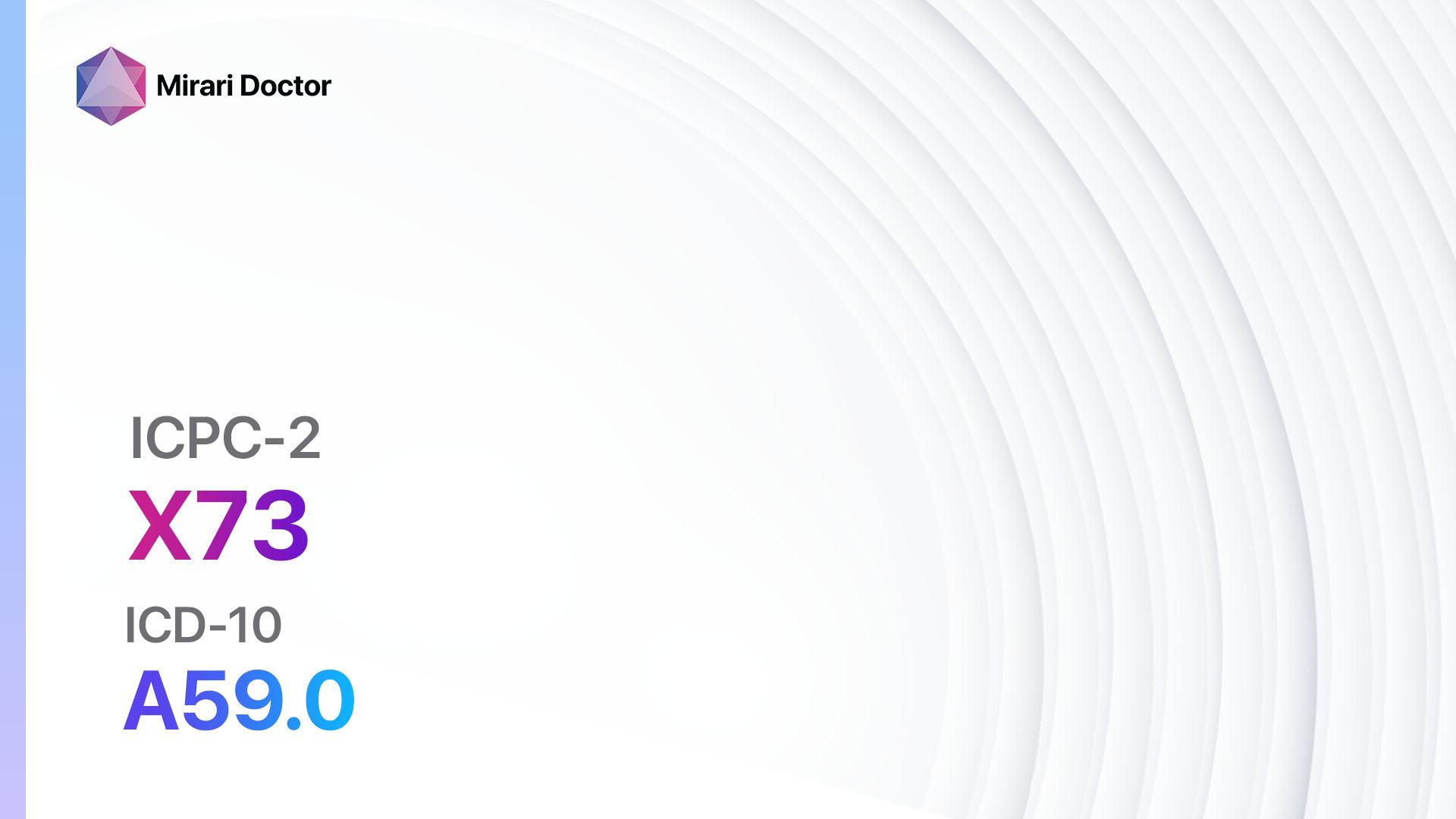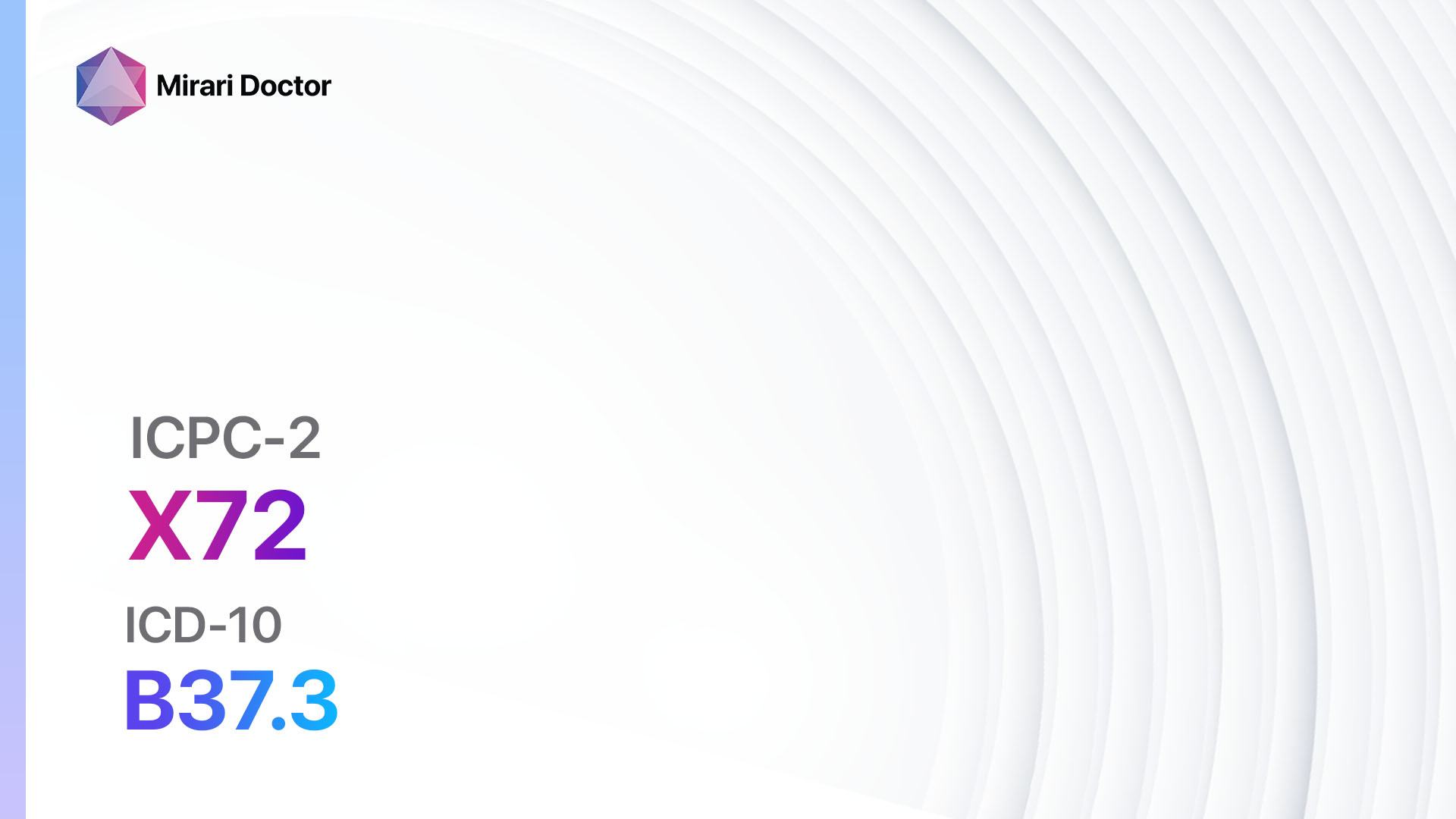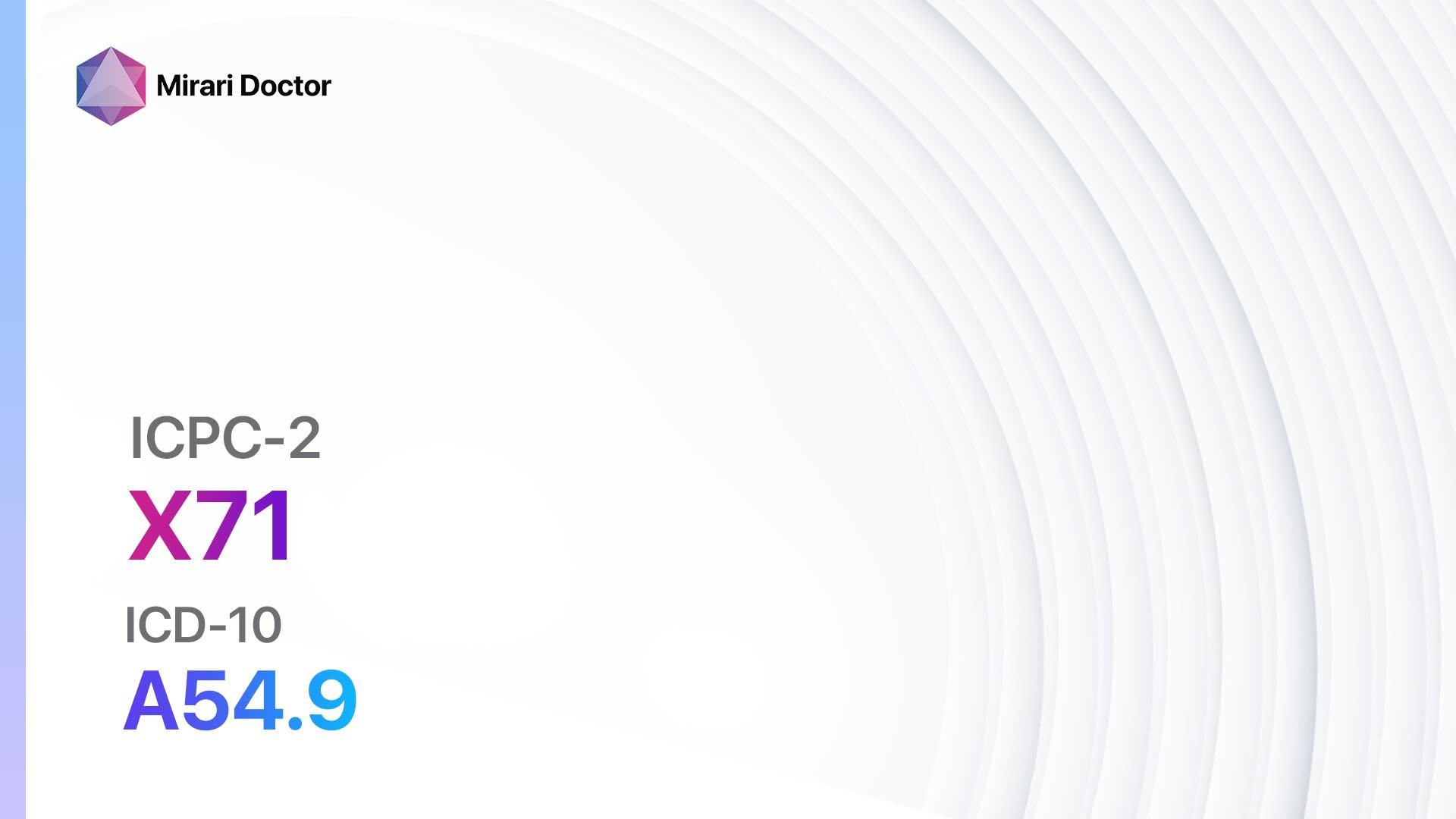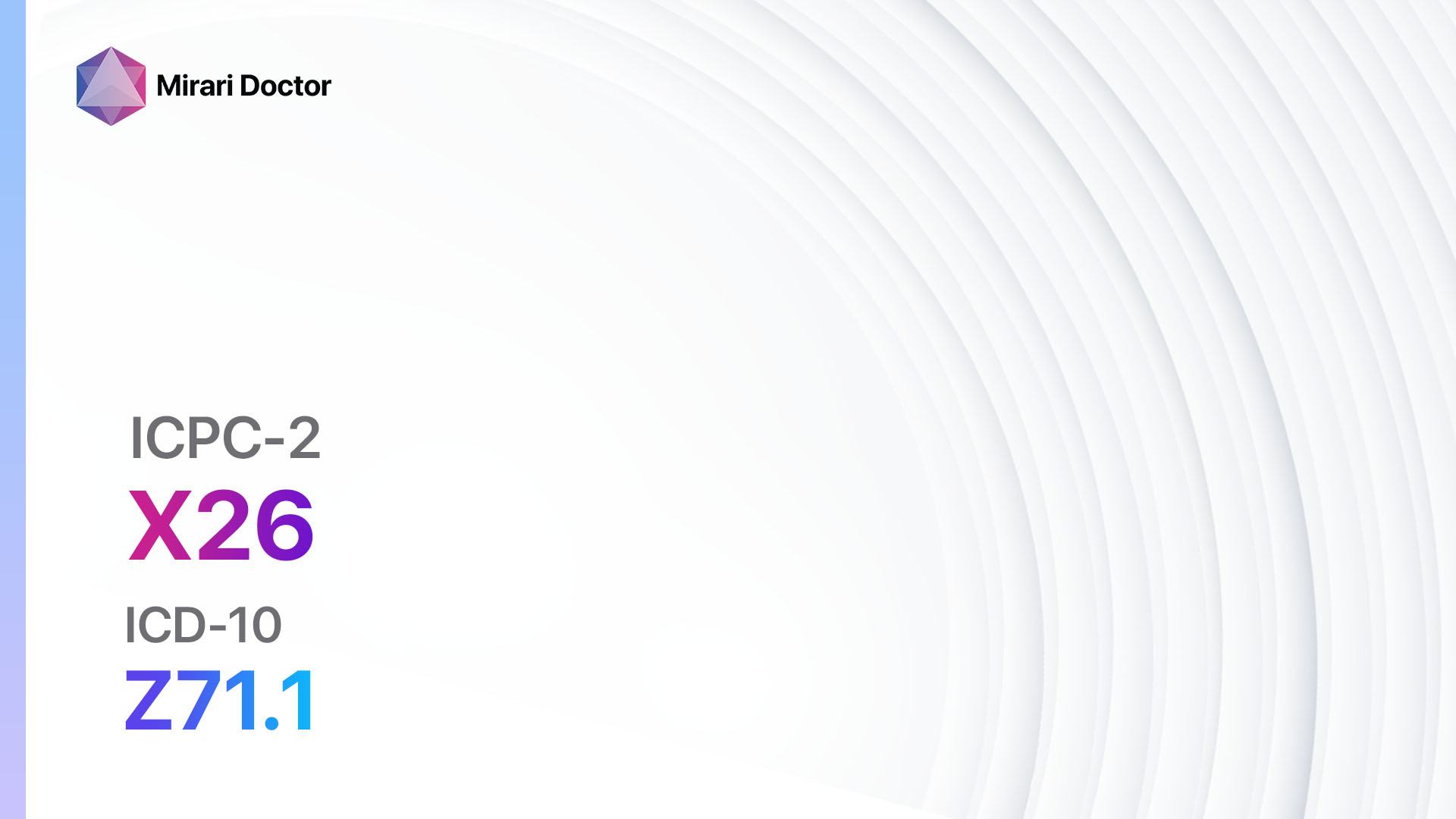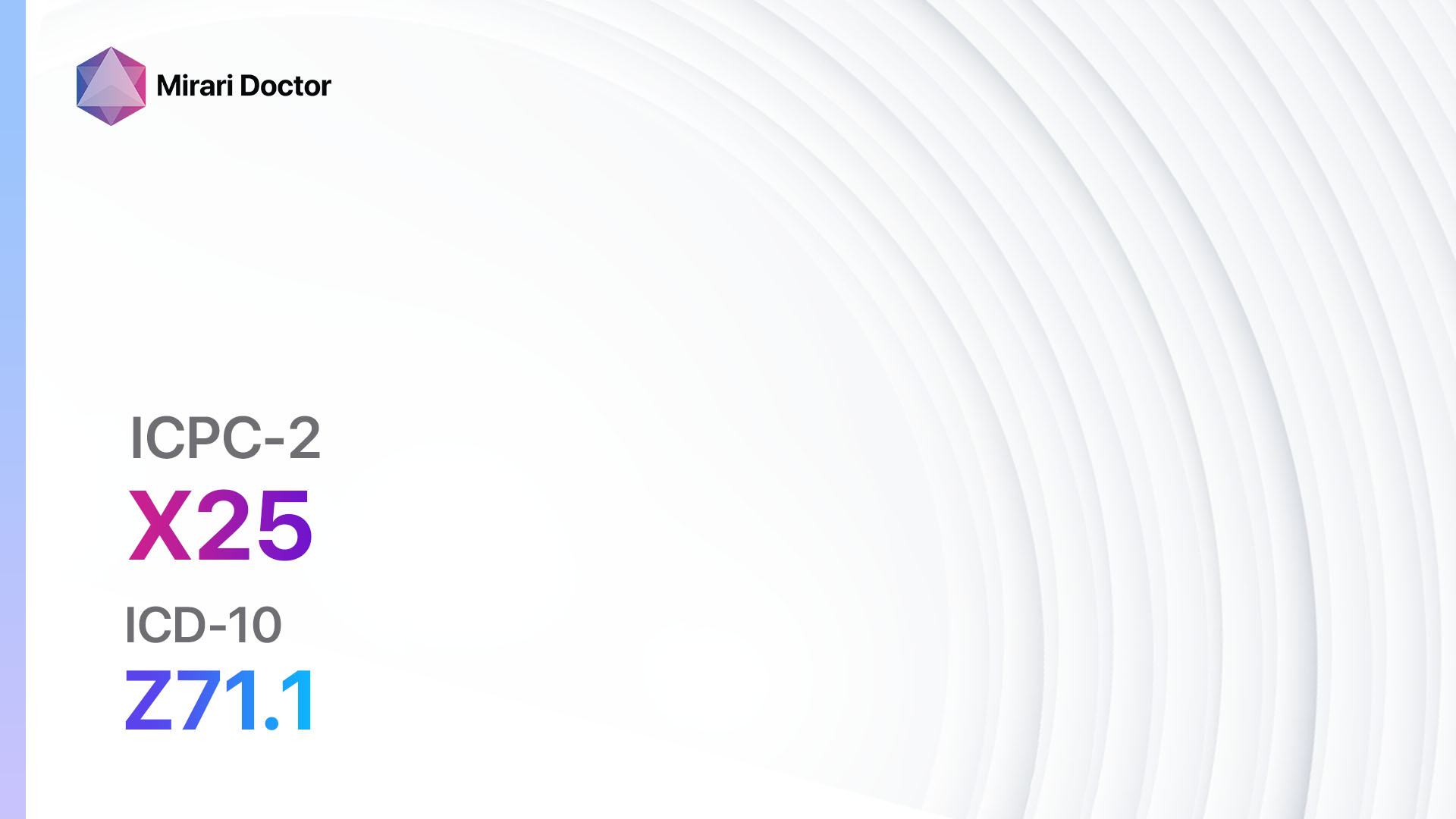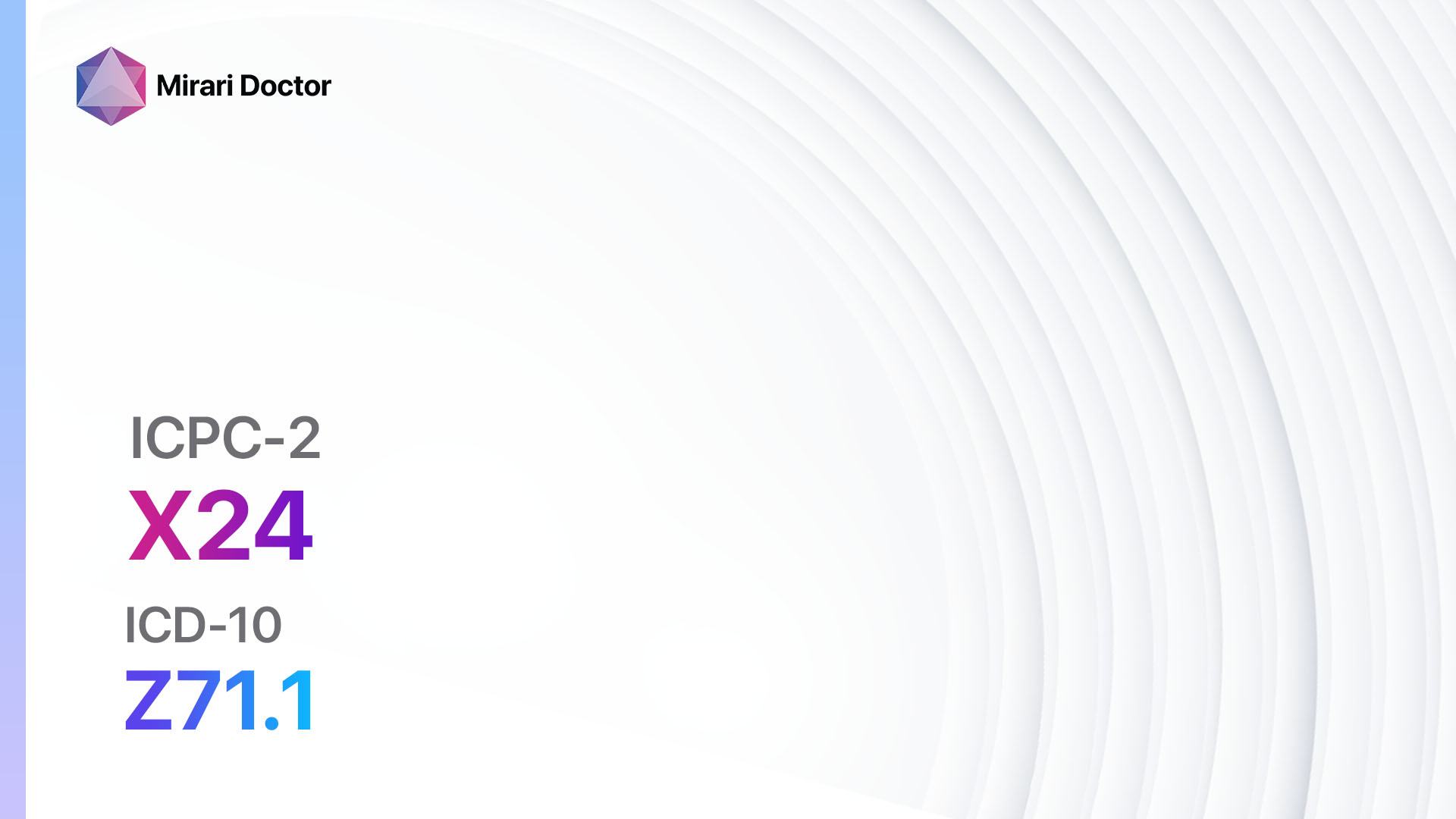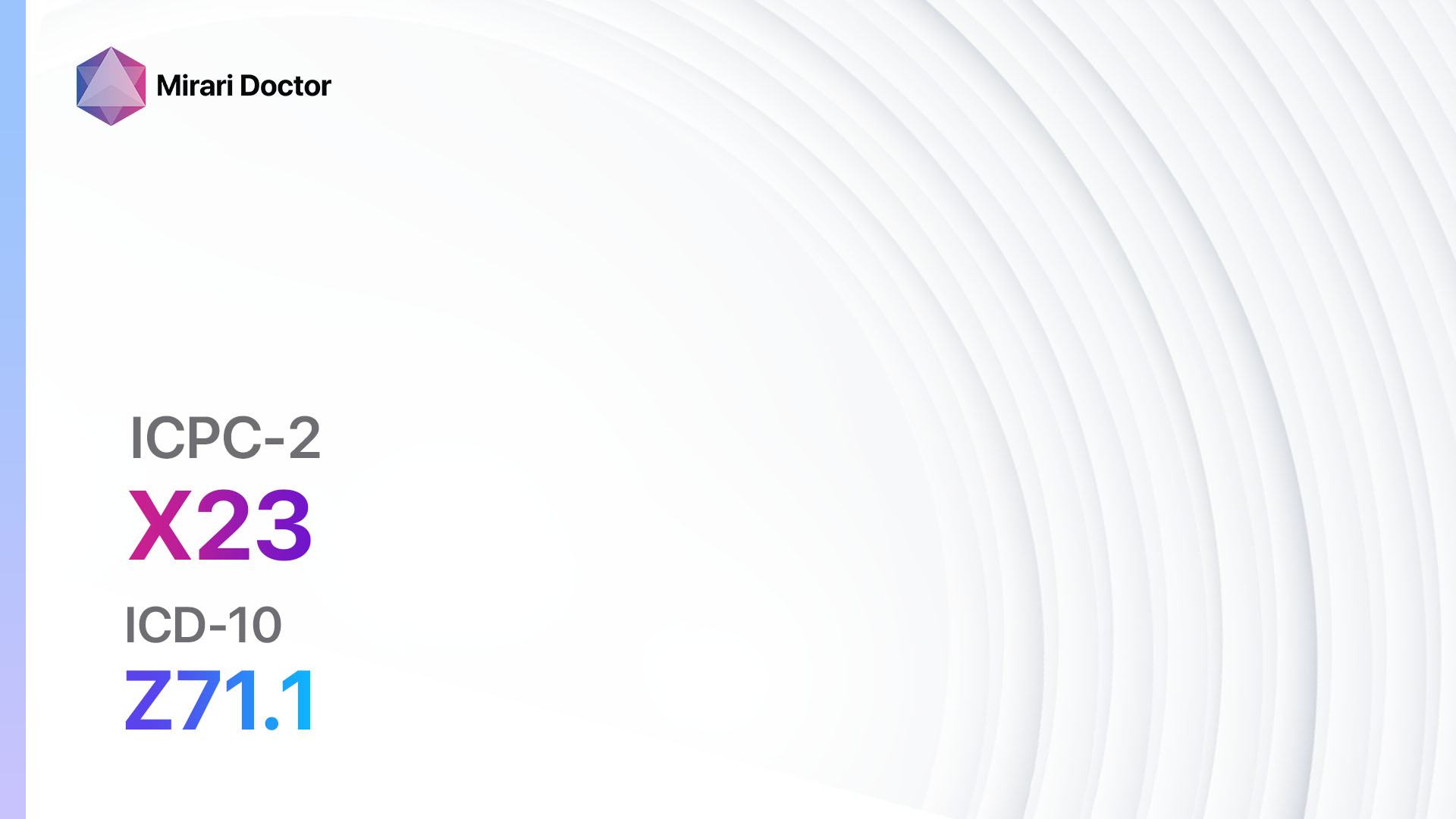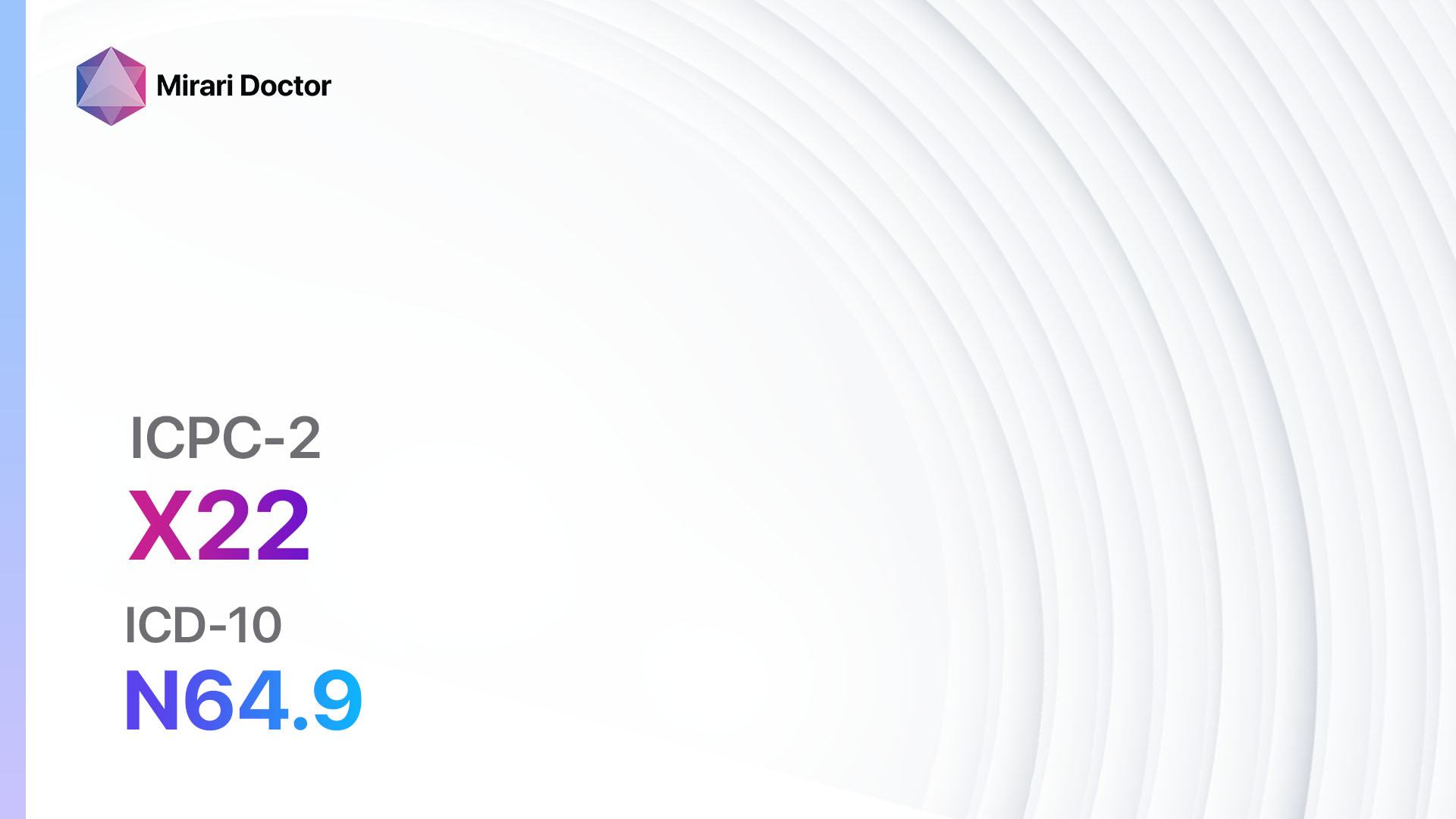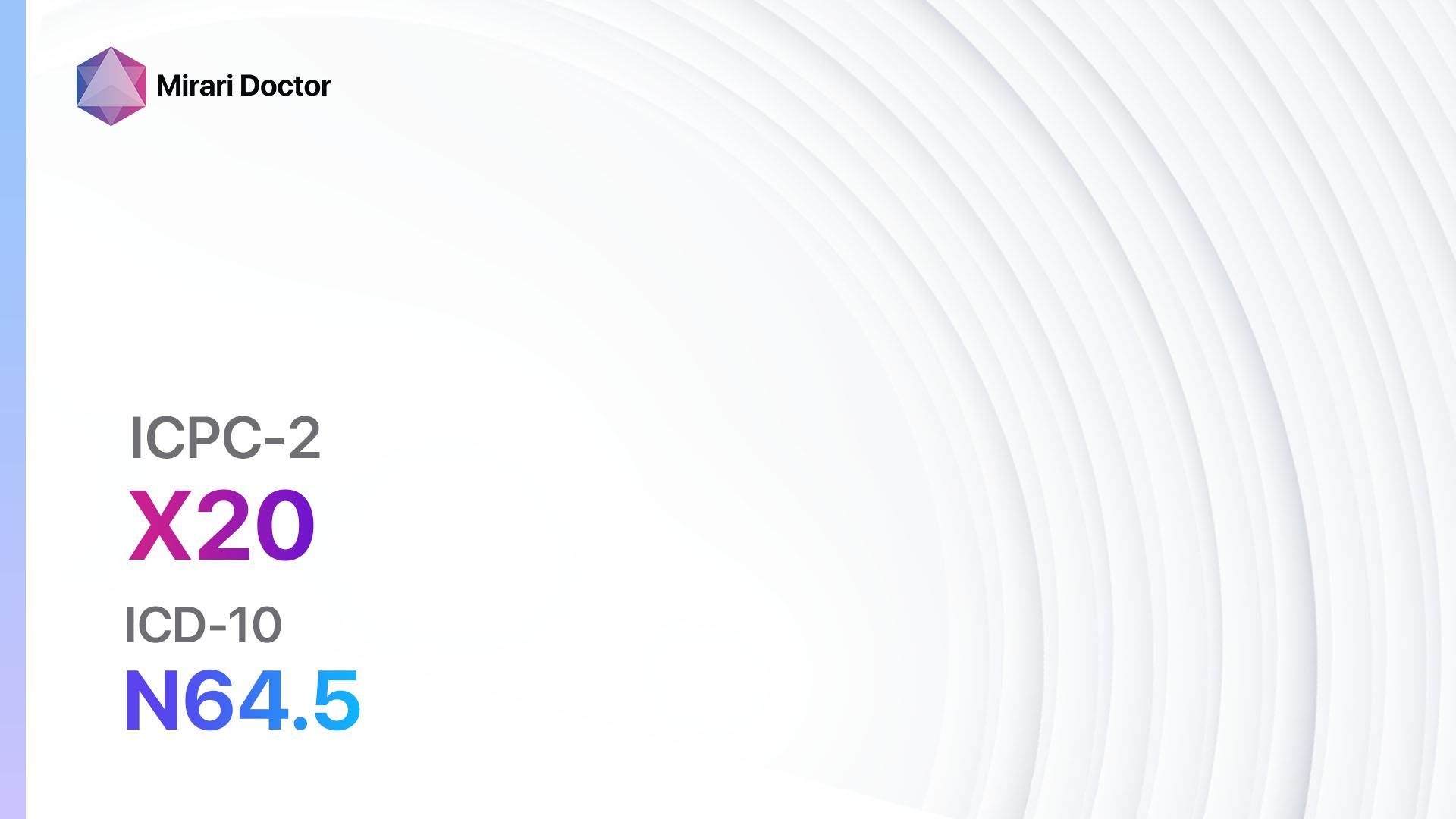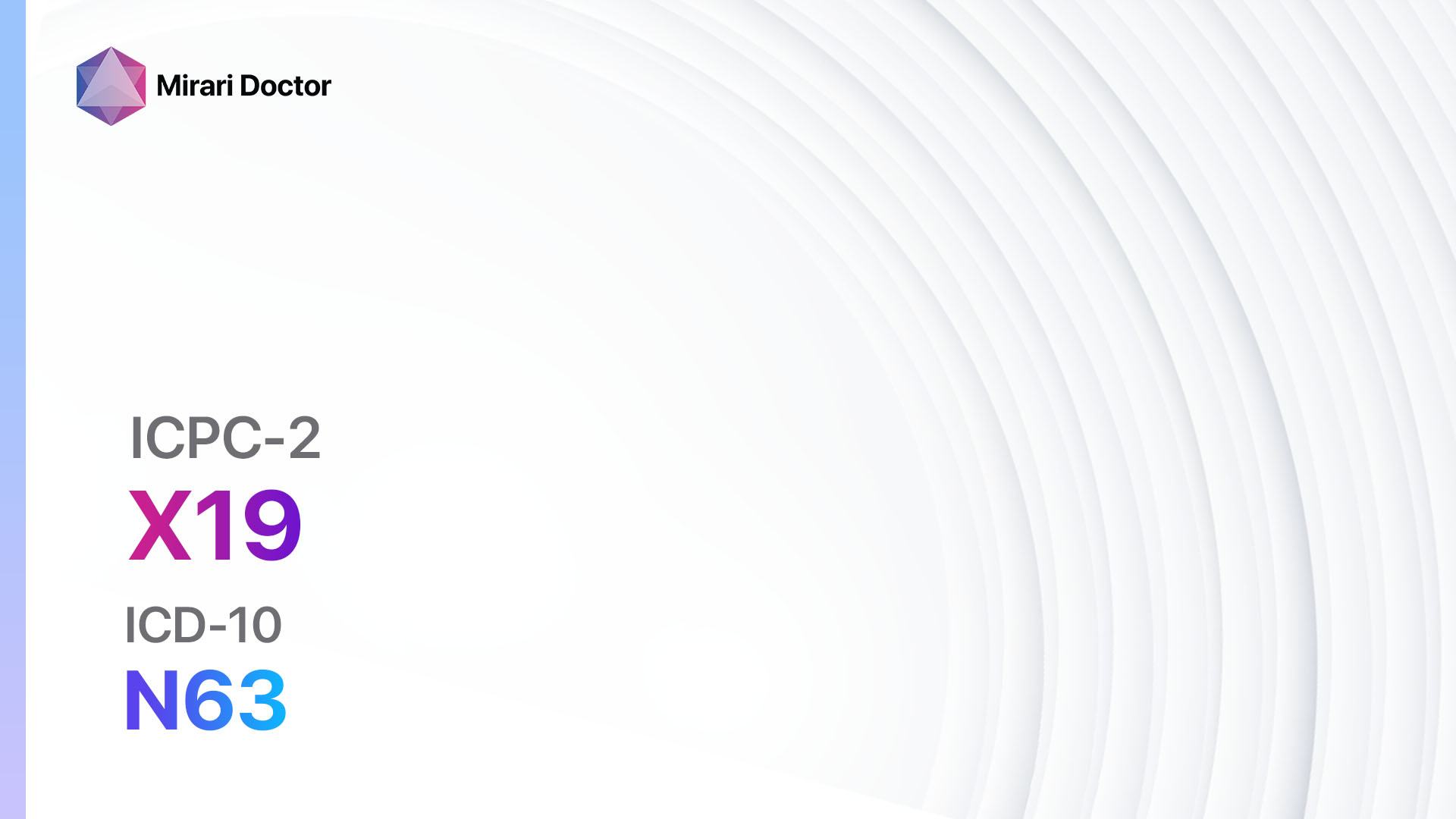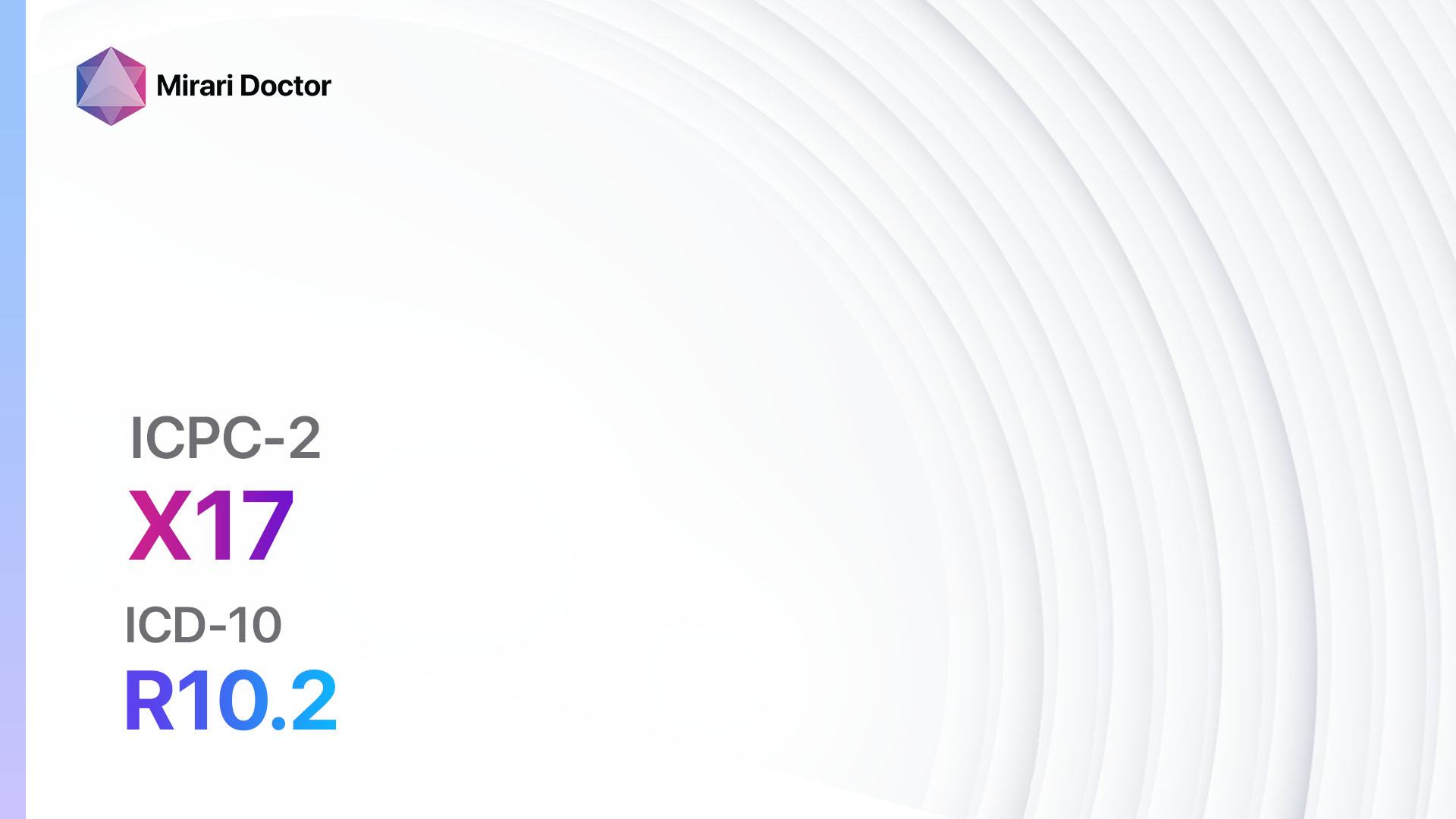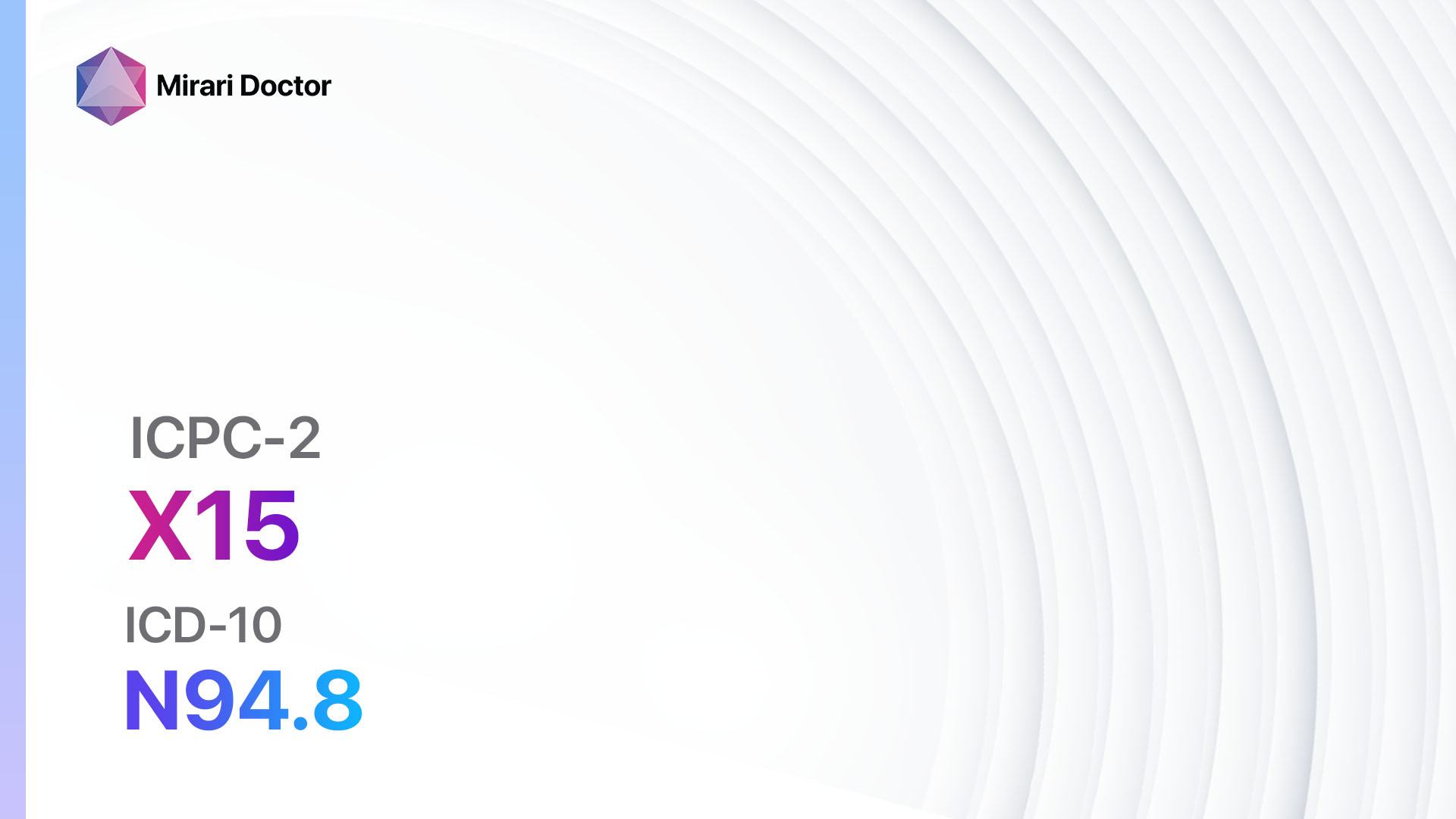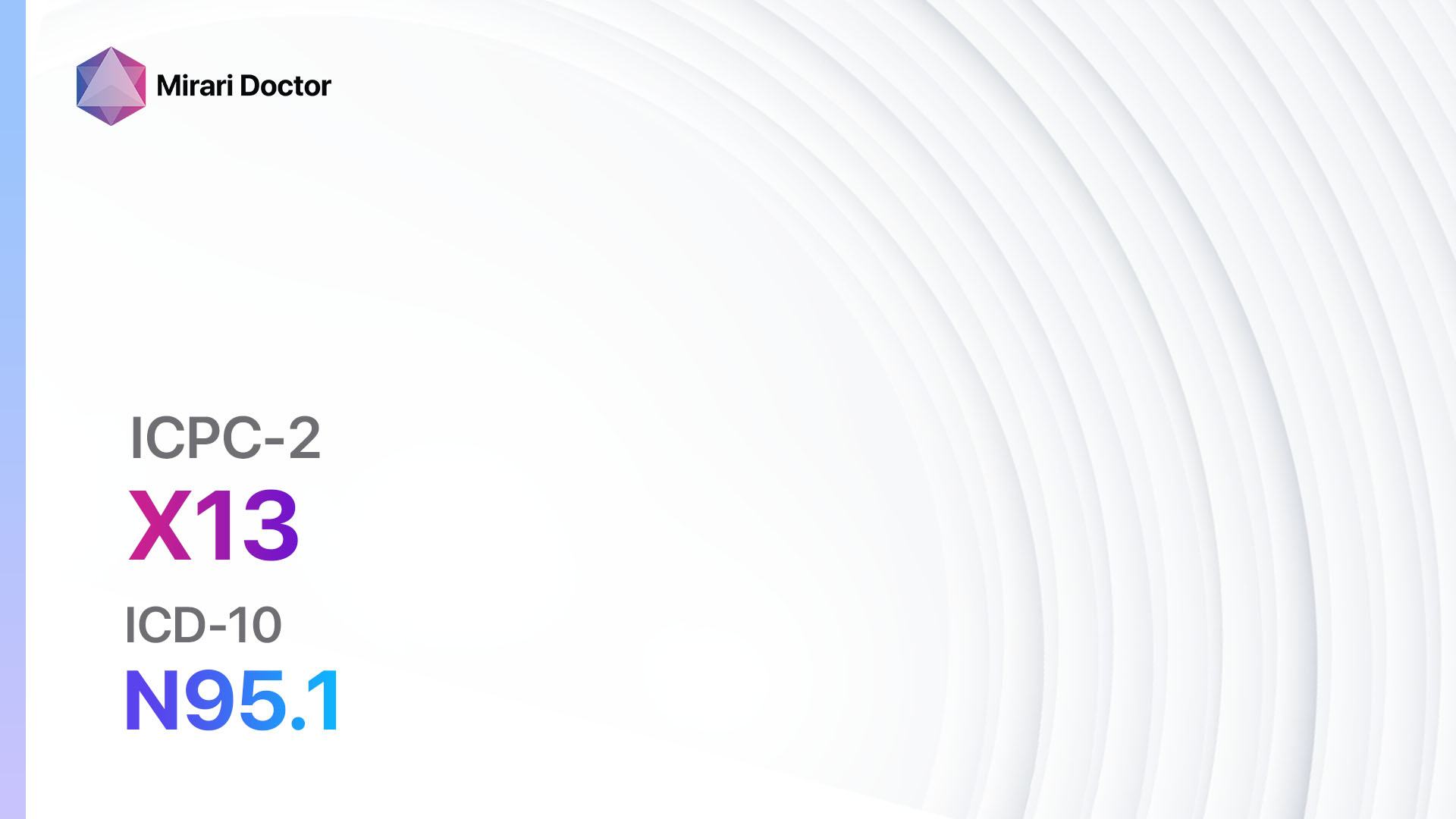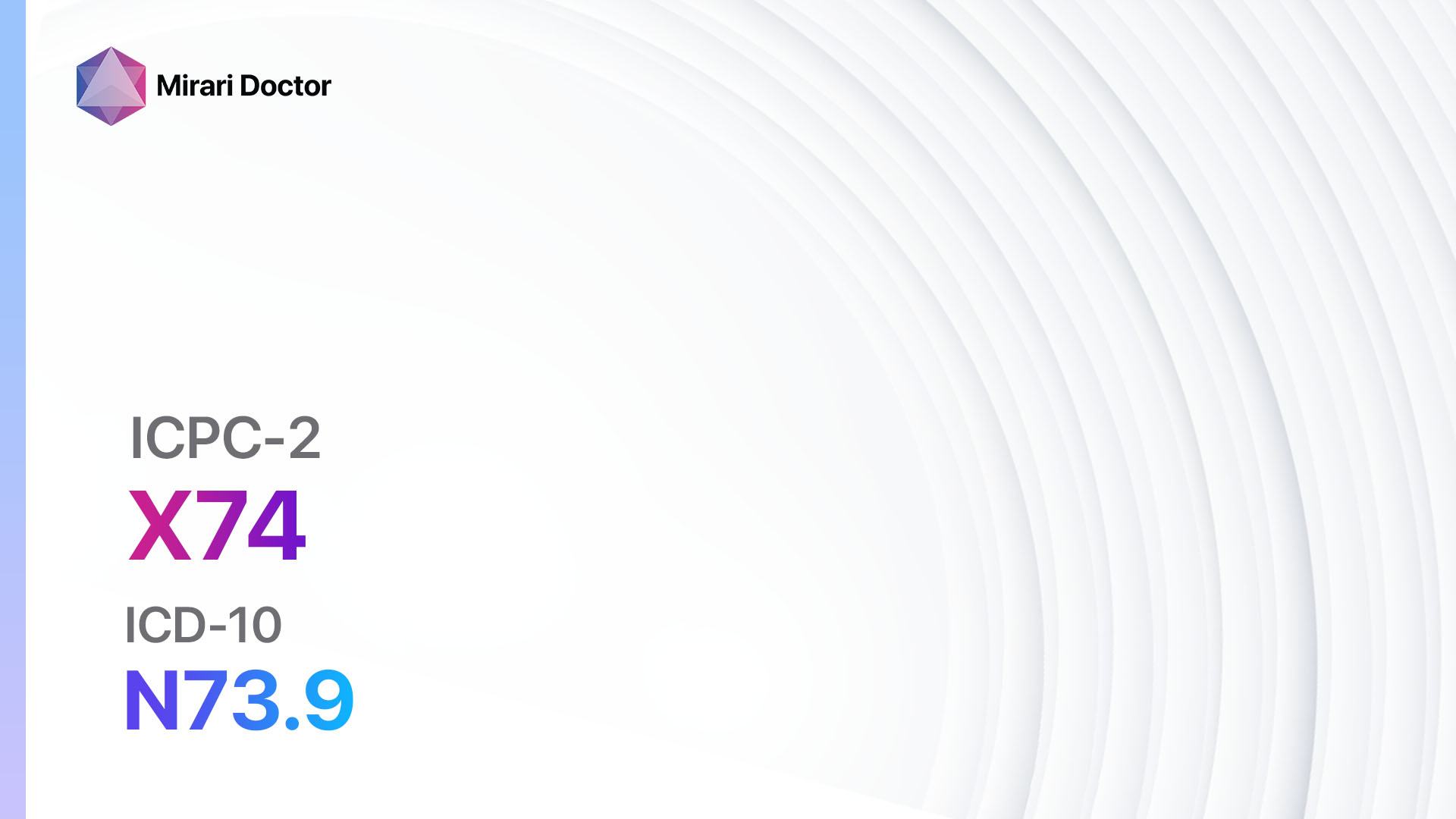
Introduction
Pelvic inflammatory disease (PID) is a common infection of the female reproductive organs. It occurs when bacteria from the vagina or cervix spread to the uterus, fallopian tubes, or ovaries.[1] PID can cause serious complications if left untreated, including infertility, chronic pelvic pain, and ectopic pregnancy.[2] The aim of this guide is to provide a comprehensive overview of PID, including its symptoms, causes, diagnostic steps, possible interventions, and patient education.
Codes
- ICPC-2 Code: X74 Pelvic inflammatory disease
- ICD-10 Code: N73.9 Female pelvic inflammatory disease, unspecified
Symptoms
- Lower abdominal pain: Dull, aching pain in the lower abdomen is a common symptom of PID.
- The pain may be constant or intermittent and may worsen during sexual intercourse or menstruation.[3]
- Abnormal vaginal discharge: PID can cause an increase in vaginal discharge that may be yellow or green in color and have an unpleasant odor.[4]
- Irregular menstrual bleeding: Women with PID may experience changes in their menstrual cycle, including heavier or lighter bleeding, spotting between periods, or missed periods.[5]
- Painful urination: PID can cause discomfort or a burning sensation during urination.[6]
- Painful intercourse: Women with PID may experience pain or discomfort during sexual intercourse.[7]
Fever and chills: In some cases, PID can cause a low-grade fever and chills.[8]
Causes
- Sexually transmitted infections (STIs): The most common cause of PID is untreated or inadequately treated STIs, such as gonorrhea or chlamydia[9].
- Bacterial vaginosis: An imbalance of bacteria in the vagina can increase the risk of developing PID[10].
- Insertion of intrauterine devices (IUDs): Women who use IUDs for contraception have a slightly higher risk of developing PID, especially in the first few weeks after insertion.
- Childbirth: Women who have recently given birth are at an increased risk of developing PID.
Diagnostic Steps
Medical History
- Gather information about the patient’s sexual history, including the number of sexual partners, history of STIs, and use of contraception.
- Ask about symptoms, including the duration and severity of pain, abnormal vaginal discharge, and changes in menstrual bleeding.
- Inquire about any previous episodes of PID or other pelvic infections.
- Assess for risk factors, such as recent childbirth, recent insertion of an IUD, or a history of STIs.
Physical Examination
- Perform a pelvic examination to assess for signs of inflammation or infection, such as tenderness in the lower abdomen, cervical motion tenderness, or abnormal discharge.
- Check for signs of systemic infection, such as fever, elevated heart rate, or low blood pressure.
- Evaluate for any other signs or symptoms that may be indicative of PID, such as adnexal tenderness or uterine tenderness.
Laboratory Tests
- Urine test: A urine sample may be collected to check for the presence of bacteria or white blood cells, which can indicate an infection.
- Blood tests: A complete blood count (CBC) may be done to check for an elevated white blood cell count, which can indicate an infection. Blood tests may also be done to check for markers of inflammation, such as C-reactive protein (CRP) or erythrocyte sedimentation rate (ESR).
- Vaginal swab: A swab may be taken from the vagina to check for the presence of STIs, such as gonorrhea or chlamydia.
- Endometrial biopsy: In some cases, a small sample of tissue may be taken from the lining of the uterus to check for signs of infection or inflammation.
Diagnostic Imaging
- Transvaginal ultrasound: An ultrasound may be done to visualize the reproductive organs and check for any abnormalities, such as fluid-filled fallopian tubes or abscesses.
- Pelvic MRI: In certain cases, an MRI may be ordered to obtain more detailed images of the pelvic organs and identify any complications, such as tubo-ovarian abscesses.
Other Tests
- Laparoscopy: In some cases, a minimally invasive surgical procedure called laparoscopy may be performed to directly visualize the pelvic organs and confirm the diagnosis of PID. This procedure may also be used to obtain a sample of fluid or tissue for further testing.
Follow-up and Patient Education
- Follow-up appointments should be scheduled to monitor the patient’s response to treatment and ensure that the infection has been successfully eradicated.
- Patient education should focus on the importance of completing the full course of antibiotics, practicing safe sex to prevent reinfection, and seeking medical attention if symptoms worsen or new symptoms develop.
Possible Interventions
Traditional Interventions
Medications:
Top 5 drugs for Pelvic inflammatory disease:
- Antibiotics (e.g., Doxycycline, Ceftriaxone):
- Cost : Generic versions can range from $10 to $50 for a course of treatment.
- Contraindications : Hypersensitivity to antibiotics, pregnancy.
- Side effects : Nausea, diarrhea, vaginal yeast infection.
- Severe side effects : Severe allergic reactions, liver toxicity.
- Drug interactions: Antacids, iron supplements.
- Warning : Complete the full course of antibiotics as prescribed.
- Nonsteroidal anti-inflammatory drugs (NSAIDs) (e.g., Ibuprofen, Naproxen):
- Cost : Generic versions can range from $5 to $20 for a course of treatment.
- Contraindications : Active peptic ulcer disease, history of gastrointestinal bleeding.
- Side effects : Upset stomach, heartburn.
- Severe side effects : Gastrointestinal bleeding, kidney problems.
- Drug interactions: Anticoagulants, other NSAIDs.
- Warning : Take with food to minimize stomach upset.
- Analgesics (e.g., Acetaminophen):
- Cost : Generic versions can range from $5 to $15 for a course of treatment.
- Contraindications : Severe liver disease, alcoholism.
- Side effects : None when taken as directed.
- Severe side effects : Liver damage (with excessive use).
- Drug interactions: None significant.
- Warning : Do not exceed the recommended dose.
- Antibiotics for sexual partners (e.g., Azithromycin, Cefixime):
- Cost : Generic versions can range from $10 to $50 for a course of treatment.
- Contraindications : Hypersensitivity to antibiotics.
- Side effects : Nausea, diarrhea.
- Severe side effects : Severe allergic reactions.
- Drug interactions: None significant.
- Warning : Sexual partners should be treated to prevent reinfection.
- Intrauterine device (IUD) removal:
- Cost : Varies depending on the healthcare provider.
- Contraindications : None.
- Side effects : None.
- Severe side effects : None.
- Drug interactions: None.
- Warning : Removal of the IUD may be necessary if the infection does not resolve or if there are recurrent episodes of PID.
Alternative Drugs:
- Alternative antibiotics (e.g., Ofloxacin, Metronidazole): In cases of allergy or intolerance to standard antibiotics, alternative antibiotics may be prescribed.
- Probiotics: Probiotic supplements may help restore the natural balance of bacteria in the vagina and reduce the risk of recurrent infections.
- Immunomodulators: In some cases, immunomodulatory medications may be used to help boost the immune response and reduce the risk of complications.
Surgical Procedures:
- Surgical drainage of abscesses: In cases where abscesses have formed, surgical drainage may be necessary to remove the pus and prevent further spread of infection.
- Salpingectomy: In severe cases of PID, where the fallopian tubes are extensively damaged and cannot be repaired, surgical removal of the affected tubes may be necessary.
Alternative Interventions
- Acupuncture: May help reduce pain and inflammation associated with PID. Cost: $60-$120 per session.
- Herbal remedies: Certain herbs, such as goldenseal and echinacea, may have antimicrobial properties and help support the immune system. Cost: Varies depending on the specific herb and preparation.
- Pelvic physical therapy: Physical therapy techniques, such as pelvic floor exercises and manual therapy, may help reduce pain and improve pelvic function. Cost: $100-$200 per session.
- Dietary modifications: A healthy diet rich in fruits, vegetables, and whole grains may help support the immune system and promote healing. Cost: Varies depending on individual food choices.
- Stress reduction techniques: Stress management techniques, such as meditation or yoga, may help reduce inflammation and promote overall well-being. Cost: Varies depending on the specific technique and location.
Lifestyle Interventions
- Rest and self-care: Adequate rest and self-care can help support the immune system and promote healing. Cost: Varies depending on individual preferences.
- Avoidance of irritants: Avoiding irritants, such as douches or scented feminine hygiene products, can help prevent further irritation and infection. Cost: Varies depending on individual preferences.
- Safe sex practices: Practicing safe sex, including using condoms and getting regular STI screenings, can help reduce the risk of developing PID. Cost: Varies depending on individual preferences.
- Smoking cessation: Quitting smoking can help improve overall health and reduce the risk of complications from PID. Cost: Varies depending on individual preferences and chosen cessation method.
- Regular exercise: Regular exercise can help improve overall health and reduce the risk of chronic pelvic pain. Cost: Varies depending on individual preferences and chosen exercise activities.
It is important to note that the cost ranges provided are approximate and may vary depending on the location and availability of the interventions. It is recommended to consult with a healthcare provider for personalized treatment recommendations and cost estimates.
Mirari Cold Plasma Alternative Intervention
Understanding Mirari Cold Plasma
- Safe and Non-Invasive Treatment: Mirari Cold Plasma is a safe and non-invasive treatment option for various skin conditions. It does not require incisions, minimizing the risk of scarring, bleeding, or tissue damage.
- Efficient Extraction of Foreign Bodies: Mirari Cold Plasma facilitates the removal of foreign bodies from the skin by degrading and dissociating organic matter, allowing easier access and extraction.
- Pain Reduction and Comfort: Mirari Cold Plasma has a local analgesic effect, providing pain relief during the treatment, making it more comfortable for the patient.
- Reduced Risk of Infection: Mirari Cold Plasma has antimicrobial properties, effectively killing bacteria and reducing the risk of infection.
- Accelerated Healing and Minimal Scarring: Mirari Cold Plasma stimulates wound healing and tissue regeneration, reducing healing time and minimizing the formation of scars.
Mirari Cold Plasma Prescription
Video instructions for using Mirari Cold Plasma Device – X74 Pelvic inflammatory disease (ICD-10:N73.9)
| Mild | Moderate | Severe |
| Mode setting: 1 (Infection) Location: 0 (Localized) Morning: 15 minutes, Evening: 15 minutes |
Mode setting: 1 (Infection) Location: 0 (Localized) Morning: 30 minutes, Lunch: 30 minutes, Evening: 30 minutes |
Mode setting: 1 (Infection) Location: 0 (Localized) Morning: 30 minutes, Lunch: 30 minutes, Evening: 30 minutes |
| Mode setting: 3 (Antiviral Therapy) Location: 0 (Localized) Morning: 15 minutes, Evening: 15 minutes |
Mode setting: 3 (Antiviral Therapy) Location: 0 (Localized) Morning: 30 minutes, Lunch: 30 minutes, Evening: 30 minutes |
Mode setting: 3 (Antiviral Therapy) Location: 0 (Localized) Morning: 30 minutes, Lunch: 30 minutes, Evening: 30 minutes |
| Mode setting: 2 (Wound Healing) Location: 0 (Localized) Morning: 15 minutes, Evening: 15 minutes |
Mode setting: 2 (Wound Healing) Location: 0 (Localized) Morning: 30 minutes, Lunch: 30 minutes, Evening: 30 minutes |
Mode setting: 2 (Wound Healing) Location: 0 (Localized) Morning: 30 minutes, Lunch: 30 minutes, Evening: 30 minutes |
| Mode setting: 7 (Immunotherapy) Location: 1 (Sacrum) Morning: 15 minutes, Evening: 15 minutes |
Mode setting: 7 (Immunotherapy) Location: 1 (Sacrum) Morning: 30 minutes, Lunch: 30 minutes, Evening: 30 minutes |
Mode setting: 7 (Immunotherapy) Location: 1 (Sacrum) Morning: 30 minutes, Lunch: 30 minutes, Evening: 30 minutes |
| Total Morning: 60 minutes approx. $10 USD, Evening: 60 minutes approx. $10 USD |
Total Morning: 120 minutes approx. $20 USD, Lunch: 120 minutes approx. $20 USD, Evening: 120 minutes approx. $20 USD, |
Total Morning: 120 minutes approx. $20 USD, Lunch: 120 minutes approx. $20 USD, Evening: 120 minutes approx. $20 USD, |
| Usual treatment for 7-60 days approx. $140 USD – $1200 USD | Usual treatment for 6-8 weeks approx. $2,520 USD – $3,360 USD |
Usual treatment for 3-6 months approx. $5,400 USD – $10,800 USD
|
 |
|
Use the Mirari Cold Plasma device to treat Pelvic inflammatory disease effectively.
WARNING: MIRARI COLD PLASMA IS DESIGNED FOR THE HUMAN BODY WITHOUT ANY ARTIFICIAL OR THIRD PARTY PRODUCTS. USE OF OTHER PRODUCTS IN COMBINATION WITH MIRARI COLD PLASMA MAY CAUSE UNPREDICTABLE EFFECTS, HARM OR INJURY. PLEASE CONSULT A MEDICAL PROFESSIONAL BEFORE COMBINING ANY OTHER PRODUCTS WITH USE OF MIRARI.
Step 1: Cleanse the Skin
- Start by cleaning the affected area of the skin with a gentle cleanser or mild soap and water. Gently pat the area dry with a clean towel.
Step 2: Prepare the Mirari Cold Plasma device
- Ensure that the Mirari Cold Plasma device is fully charged or has fresh batteries as per the manufacturer’s instructions. Make sure the device is clean and in good working condition.
- Switch on the Mirari device using the power button or by following the specific instructions provided with the device.
- Some Mirari devices may have adjustable settings for intensity or treatment duration. Follow the manufacturer’s instructions to select the appropriate settings based on your needs and the recommended guidelines.
Step 3: Apply the Device
- Place the Mirari device in direct contact with the affected area of the skin. Gently glide or hold the device over the skin surface, ensuring even coverage of the area experiencing.
- Slowly move the Mirari device in a circular motion or follow a specific pattern as indicated in the user manual. This helps ensure thorough treatment coverage.
Step 4: Monitor and Assess:
- Keep track of your progress and evaluate the effectiveness of the Mirari device in managing your Pelvic inflammatory disease. If you have any concerns or notice any adverse reactions, consult with your health care professional.
Note
This guide is for informational purposes only and should not replace the advice of a medical professional. Always consult with your healthcare provider or a qualified medical professional for personal advice, diagnosis, or treatment. Do not solely rely on the information presented here for decisions about your health. Use of this information is at your own risk. The authors of this guide, nor any associated entities or platforms, are not responsible for any potential adverse effects or outcomes based on the content.
Mirari Cold Plasma System Disclaimer
- Purpose: The Mirari Cold Plasma System is a Class 2 medical device designed for use by trained healthcare professionals. It is registered for use in Thailand and Vietnam. It is not intended for use outside of these locations.
- Informational Use: The content and information provided with the device are for educational and informational purposes only. They are not a substitute for professional medical advice or care.
- Variable Outcomes: While the device is approved for specific uses, individual outcomes can differ. We do not assert or guarantee specific medical outcomes.
- Consultation: Prior to utilizing the device or making decisions based on its content, it is essential to consult with a Certified Mirari Tele-Therapist and your medical healthcare provider regarding specific protocols.
- Liability: By using this device, users are acknowledging and accepting all potential risks. Neither the manufacturer nor the distributor will be held accountable for any adverse reactions, injuries, or damages stemming from its use.
- Geographical Availability: This device has received approval for designated purposes by the Thai and Vietnam FDA. As of now, outside of Thailand and Vietnam, the Mirari Cold Plasma System is not available for purchase or use.
References
- Jaiyeoba O, Soper DE. A Practical Approach to the Diagnosis of Pelvic Inflammatory Disease. Infect Dis Obstet Gynecol. 2011;2011:753037.
- Brunham RC, Gottlieb SL, Paavonen J. Pelvic inflammatory disease. N Engl J Med. 2015 May 21;372(21):2039-48.
- Curry A, Williams T, Penny ML. Pelvic Inflammatory Disease: Diagnosis, Management, and Prevention. Am Fam Physician. 2019 Sep 15;100(6):357-364.
- Ross J, Guaschino S, Cusini M, Jensen J. 2017 European guideline for the management of pelvic inflammatory disease. Int J STD AIDS. 2018 Feb;29(2):108-114.
- Jennings LK, Krywko DM. Pelvic Inflammatory Disease (PID). StatPearls [Internet]. Treasure Island (FL): StatPearls Publishing; 2021 Jan.
- Risser WL, Risser JM, Risser AL. Current perspectives in the USA on the diagnosis and treatment of pelvic inflammatory disease in adolescents. Adolesc Health Med Ther. 2017 Jul 4;8:87-94.
- Kreisel K, Torrone E, Bernstein K, Hong J, Gorwitz R. Prevalence of Pelvic Inflammatory Disease in Sexually Experienced Women of Reproductive Age – United States, 2013-2014. MMWR Morb Mortal Wkly Rep. 2017 Jan 27;66(3):80-83.
- Bugg CW, Taira T. Pelvic Inflammatory Disease: Diagnosis And Treatment In The Emergency Department. Emerg Med Pract. 2016 Dec;18(12):1-24.
- Soper DE. Pelvic Inflammatory Disease. Obstet Gynecol. 2010 Aug;116(2 Pt 1):419-28.
- Ness RB, Hillier SL, Kip KE, Soper DE, Stamm CA, McGregor JA, Bass DC, Sweet RL, Rice P. Bacterial vaginosis and risk of pelvic inflammatory disease. Obstet Gynecol. 2004 Oct;104(4):761-9.
Related articles
Made in USA


